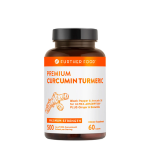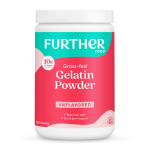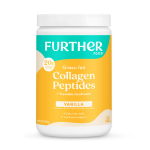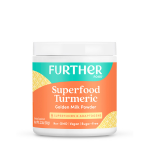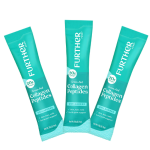How My Daughter's Diagnosis Forced Me to Transform the Way I Cooked for Good
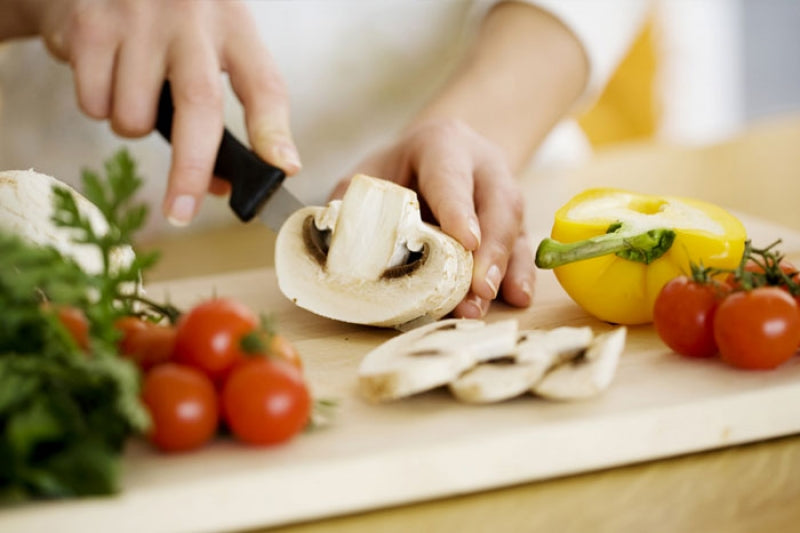
In the past 10 years, I learned to cook for a high-fat diet; a low-acid diet; a fat-free diet; and a diet without meat, dairy, eggs, soy, nuts, fish, and wheat. I learned to cook these things not for a meal here and there, but for someone following these diets because her doctors insisted that she must. I learned to cook these things not for an adult who understood why it was necessary, but for a child. That child was my second daughter, Sammi.
In 2005, when she was born, I began her life of eating in the best way I knew how: I nursed her. She nursed well from the first moment I held her, and she grew from the perplexing, post-term weight of 4 pounds, 11 ounces to the admirable weight of 12 pounds, 4 ounces in just under five months. It was when we started introducing solid food that sustaining that weight became a problem.
After her first introduction to solid food — oatmeal mixed with my own breast milk — she responded with projectile vomiting. After months of refusing to eat my homemade fruit purees, an impulse purchase of jarred, syrupy baby food became the only thing Sammi would eat that wasn’t my milk, and even that, she ate with only the most reluctant licks of a spoon. Though her doctor insisted she would find her way to solid food eventually, I suspected something was wrong.
Her breath smelled like spit-up all the time and her weight stopped growing at its newborn pace, and she was diagnosed with reflux. At a year, Sammi was a tiny sixteen-and-a-half pounds and still refusing most solid foods. She suffered from respiratory infections that inevitably required hospitalization, and received a surprise diagnosis of a rare congenital heart defect called a double aortic arch — a ring of extra artery around her airway and gullet — just after her first birthday. Surgery to repair it revealed what we were sure was our answer: her esophagus had been compressed by the extra branch of her aorta, making swallowing anything but liquids difficult. Now, surely, Sammi would eat and grow.
But she didn’t.
Because her reflux persisted, we had to feed her a diet absent of major sources of acid: citrus fruit, tomato, and chocolate. We were also cautioned that the weight lost during her surgery and recovery needed to be regained, and so I learned on the fly to find ways to cook with extra, hidden fat. Every bite she ate needed to be calorie dense, given how few bites she was willing to eat.
I learned to cook foods to which I could add heaping tablespoons of extra virgin coconut oil (125 calories per tablespoon!), mashed avocado, and heavy cream. I learned not to gag when my husband fed Sammi butter from a spoon. I learned to make a large pot of my daughter’s favorite chickpea soup every week, and to warm it in baby-sized servings any time we had a moment to eat. I learned to see calories — any calories — as diamonds, and to cut M&Ms into fourths so that she could eat them with her tiny fingers without choking.
Somehow, she grew just enough.
When she was four, her reflux had not disappeared. Every time we tried to wean her from her medication, she would gag and cough her way through the day. Too old for such a thing, according to the expectations of her doctors, she was sent in for an endoscopy, where they found clusters of white blood cells called eosinophils in several places in her esophagus. An inflammatory disorder called eosinophilic esophagitis was her new diagnosis, and the doctors explained that she was likely reacting to a food protein her body was rejecting. The two options for treatment were a swallowed steroid slurry, or a special elimination diet to sleuth out the offending food or foods.
We chose the diet, and we chose to follow it as a family for every meal we ate together.
The first step was to eliminate all dairy, eggs, soy, wheat, and nuts from her already-vegetarian diet. I swept my pantry and refrigerator not for the “no” foods but for the “yes” ones — what could she eat? We filled a yellow legal pad with the list, and then sat Sammi down to explain.
“You can only eat the food that Daddy and I give you,” I told her. “We’re going to find out which food is making you sick, but it is going to take a long time. You have to promise not to eat anything anyone else offers you.”
She agreed, happy that many of her favorites — fruit, chickpeas, lollipops — were still available. I set to work learning to cook with what I had. I spent hours each day preparing not only meals but the building blocks of meals; I learned to make gluten-free flour blends and egg substitutes, a mac-and-cheese analogue that looked real; cream soups with rice milk. We discovered vegan cheeses and gluten-free pretzels. I set out to find two meals a week that could be made in a half-hour or less, and I succeeded: corn tostados with refried black beans, and gluten-free pancakes.
And somehow, we made it through the first eight weeks on that diet. After another endoscopy showed she was healed, we added eggs; then six weeks later, soy; then nuts, wheat, and finally dairy. Her esophagus remained healthy even with a totally unrestricted diet. A year of cooking nearly full-time, dreaming in labels and recipes, and vigilantly watching her environment at school for food-related issues was over, and she seemed to be miraculously cured.
We floated through the next 18 months in a confused fog, wondering why we had just experienced all of that, until Sammi began gagging again. Now eight years old, still extremely small, and taking hours to eat anything, Sammi was sent off for another endoscopy which revealed the return of those awful eosinophils. Not sure what to do next, the doctors added back reflux medication while they pontificated, until finally, someone thought to ask about trauma to the muscles of her esophagus.
When we realized that the doctors dealing with her esophagus didn’t know anything about the doctors dealing with her heart, conversations sped up. Other tests were ordered, and we learned that her esophagus was once again compressed, this time by her aorta. With all the proper wheels in motion, we finally learned that food was regularly trapped in her esophagus, rubbing on it so hard that it caused irritation. With irritation, come white blood cells. In this case, the white blood cells were eosinophils.
Sammi had a second cardiac surgery within months, this time to move her aorta out of the way and clean up all the scar tissue around her esophagus from her first surgery. Though we knew about this risk ahead of time, we were nonetheless disappointed to learn that there had been a complication during the surgery. The surgeons felt sure they had, in the process of scraping away the scar tissue, nicked one of Sammi’s thoracic ducts.
Thoracic ducts are part of the body’s lymphatic system, carrying a fluid called chyle. Chyle is made up largely of fat, and if a thoracic duct is leaking into the chest cavity, chyle can pool inside, making it hard to breathe. When a surgeon suspects, as Sammi’s did, that a thoracic duct has been compromised, the best solution is to wait until it heals on its own. In the meantime, the patient — who is now diagnosed with chylothorax — must avoid all sources of dietary fat.
My eight-year-old now had to be on a six-week fat-free diet.
This was, by far, the worst diet of all. Since she had begun eating, I had been laser-focused on feeding her as much as I could to make her grow. I had been adding extra fat to her food for her entire life! Now, I had to learn to sauté things in water. I added more sugar to her diet. We experimented with fat-free cottage cheese and tremendous volumes of rice.
It was the worst-tasting diet we’d tried. The saving grace of it all was our Friday-evening ritual, which we called Sushi Movie Sabbath. As a family, we rolled out vegetable sushi every Friday evening, including a special plate of fat-free-cream-cheese-and-tomato rolls for Sammi. Then, as a family, we watched a movie and tried to forget how unpleasant the week’s meals had been.
When the diet finally ended, and a chest x-ray revealed that there was no fluid accumulated there, Sammi and I celebrated with a trip to the Hershey’s store. Certain she would stuff her face like any school-age child, given the opportunity, I tried to hide my heartbreak when she gently nibbled at a few Junior Mints.
Of course food was without joy for her. Perhaps, I worried, a lifetime of messing with her diet had ruined her enthusiasm forever. And so, off we went that summer to feeding therapy, a weekly meal with an occupational therapist who talked about focusing on her plate, stretching out her stomach, feeding her body with love. I learned to look the other way when she said she was done. I learned to say yes when she asked for a bedtime snack. I learned to breathe deeply and stock the pantry with snacks she liked and throw them away when they got stale without commenting.
And, slowly, finally, I learned how to cook the things I liked.
We are now nearly two years past her final surgery. Six months afterward, she sat down to a plate of Thai food at our favorite restaurant and nonchalantly ate the whole thing. I squeezed my own leg under the table in joy. The next week, she ate a sandwich of cream cheese and strawberry jam while chatting with a friend, and I cried.
And so why don’t I hate cooking? I think it’s because it has always been something I could do. I could not sleuth out the source of her health problems, prescribe medicine, or perform surgery. I could not do an x-ray or a CT scan. I could make a delicious pot of lentils. I could rush to school with a homemade popsicle on the day of the picnic. I could fashion a birthday cake from rice cereal and vegan buttercream. Cooking gave me agency, a way to show my dedication and attention, and a set of tasks that could be started and completed, unlike the rest of our uncertain, unpredictable life.
Now, it gives me all those same rewards, but the difference is that it also gives all of us pleasure — without restrictions.
Want more? You might also like:
Success Story: Curing My Patient’s Lupus, Leaky Gut, Depression, Brain Fog….Starting at the Gut
The Moment I Found My Voice Again: Overcoming Silent Reflux (LPR)
I Was Afraid of Speaking Up… and It Actually Made Me Sick
My Toddler Wanted to Play, But My Body Couldn’t. I Lost 110 LBS and Now I Thrive with Chronic Illnesses!
Note: PLEASE consult with your doctor before making any changes to your diet or medications. The material on this site is provided for educational purposes only, and is not to be used for medical advice, diagnosis or treatment.








